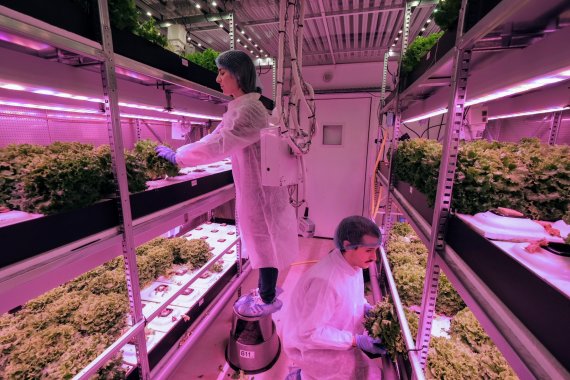The experiment ended on 8 February. The 288 heads of lettuce that were left were harvested by Graamans and four of his colleagues and donated to the Food Bank Neder-Veluwe.
The food bank was very happy with the donation, as shortages of fresh fruit and vegetables are very frequent.
Michele Butturini from the Greenhouse Horticulture group grew the lettuce in climate cells at the Plant Sciences group. The cells accommodate three vertical layers of lettuce, each illuminated by LED lamps.
In practice, lettuce is generally grown at temperatures of 9 to 12 degrees Celsius. The research team wants to know how lettuce thrives at various light intensities and temperatures between 20 and 32 degrees. This could save on energy costs (cooling) in these closed spaces.
Graamans has also been investigating the influence of air and root temperature on the crops to optimise cooling. The research team wants to recalibrate the current growing models for use in vertical agriculture.
Production climate
Graamans is an engineer from Delft who researches food production in closed systems in the city. ‘Production of vegetables in vertical farms currently costs much more energy than in greenhouses, because we don’t use sunlight. But the advantages are numerous: the production climate can be controlled better, residual streams can be reused, and fresh vegetables can be grown close to the consumers in the city.’
The study is not yet concluded, which means the food bank will receive more lettuce in the months to come.

 Photo: Guy Ackermans
Photo: Guy Ackermans